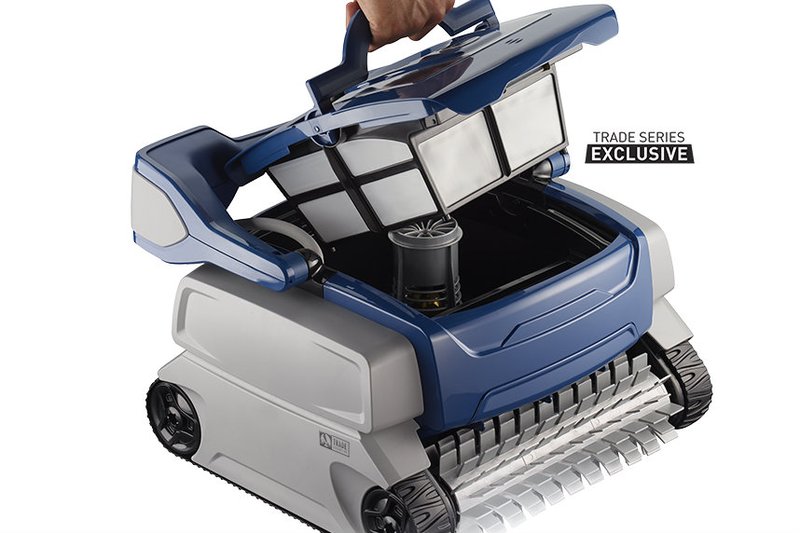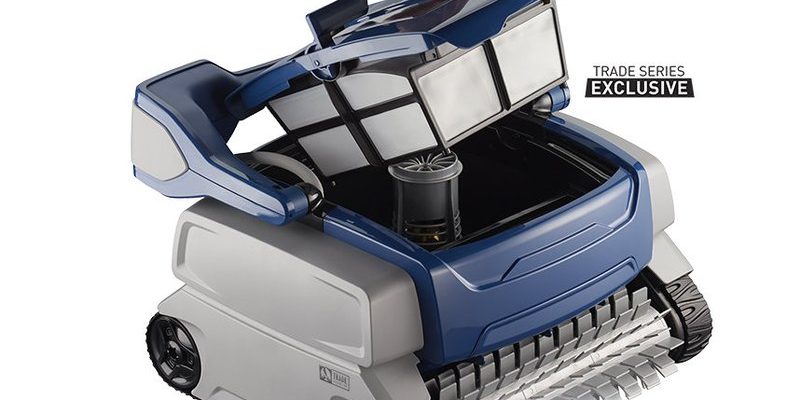
Here’s the thing: automation in pools has come a long way, but it’s not always crystal clear how things work out of the box. Some people buy a Polaris remote expecting it to handle everything—lights, jets, temperature, you name it—only to realize there’s more to the story. Programming, pairing, and compatibility all play a role, and missing a tiny step can throw things off. So, let’s walk through what you can really expect from a Polaris pool remote when you want to switch between spa and pool duties—no tech jargon, just real answers.
How Polaris Pool Remotes Work: The Basics
Think of a Polaris pool remote as the conductor of your own backyard orchestra. Instead of waving a baton, you’re pressing buttons—turning pumps on, changing water features, or adjusting the temperature, all without leaving your chair. But for all this to happen, your remote talks to a central automation system. This “brain” is usually tucked away by the pool equipment, making all the decisions based on your commands.
Now, whether you can control the spa and pool separately depends on a few things. The remote itself is just part of the equation. What really matters is how your automation system is set up. If your system is designed with separate controls—or as the pros call it, “shared equipment with automated valves”—then your remote can direct traffic: sending water to the spa, the pool, or both. If not, you might be stuck toggling the whole system, not each part individually.
Here’s a little analogy: your remote is like the TV remote, but your pool and spa are like channels. If you only have cable for one, no amount of button-pressing will get you a new channel. The guts behind the wall have to be wired right, and the remote just sends the requests.
Remote Features: What Can You Actually Control?
You might be wondering, “Can my Polaris pool remote really handle both my pool and spa at the same time?” Here’s where specifics matter. Many Polaris pool remotes (especially the more advanced models, like those paired with Polaris automation systems) can switch control between pool and spa modes. This lets you:
- Turn on the spa heater without heating the pool
- Activate spa jets for a bubbling soak
- Swap valves to move water from pool to spa or vice versa
- Adjust lights for either area independently
But not all remotes are created equal. Some basic models only send simple “on/off” signals, while others have LCD screens with touch controls and customized programming. If you want to, say, boost the spa jets while leaving the pool filter running, you’ll need a system that supports multi-zone control and a remote that talks to it.
Honestly, before splurging on a top-end remote, check what your system can actually do. The fanciest remote won’t fix a basic control panel—it’s like buying a smart thermostat for a house with no central heating.
Pool vs. Spa: How “Separate” Is Separate?
Let me explain what “separate control” really means. Most backyard setups use something called shared equipment—a single pump and filter used for both the pool and spa. To switch between them, your automation system opens or closes electronic valves. When you tell the remote to “switch to spa,” it reroutes water flow, powers up the heater for the smaller volume, and gives you that steaming-jet experience.
But here’s the catch: you can’t run the pool and spa *entirely* independently if they share the equipment. You can’t, for example, heat the pool and the spa at different temperatures at the same time. The system toggles between “pool mode” and “spa mode.” The remote lets you make that switch from your lounger, but the equipment itself can only do one or the other at a given time. If you want truly separate, side-by-side operation, you’d need entirely separate pumps, filters, and heaters—a rare setup outside of luxury builds.
So, the Polaris pool remote does “separate control” in the sense that you can jump between modes, but both still rely on the same hardware. It’s like having one shower but two water settings—you can only pick one at a time, but at least you don’t have to run back and forth to do it.
The Pairing Process: Getting Your Remote and System in Sync
Pairing your Polaris pool remote with the automation system is kind of like syncing a new phone with your smart home—it needs to learn who’s boss. If you’re setting things up for the first time, be ready for a bit of button pressing, entering codes, and maybe a few moments of confusion.
Here’s how most remotes pair with their control system:
- Activate pairing mode on the automation panel (there’s usually a button marked “Learn” or “Pair”)
- Put the remote into sync mode (check your model’s instructions—it could be holding down a combo of buttons)
- Wait for the confirmation (often a beep, blinking light, or message on the display)
This pairing process lets the remote communicate securely, so your neighbor can’t accidentally crank your spa jets. If there’s ever a hiccup—like the remote refusing to connect—a quick reset (sometimes holding the power or reset button for 10 seconds) usually gets things back on track. And don’t forget the batteries—weak battery power is one of the main reasons for weird glitches or dropped signals.
Common Problems and Troubleshooting Tips
Even the smartest remotes have their “not today” moments. Maybe the spa won’t heat, or the pool lights ignore your command. Here’s my short list of common headaches with Polaris pool remotes—and what you can actually do about them:
- Out-of-sync? Try re-pairing the remote with your automation panel. Sometimes power interruptions or low batteries can drop the connection.
- Batteries low? Weak signal, laggy response, or failed commands almost always point to dying batteries. Swap them out and see if things perk up.
- Valves stuck? If you press “spa mode” and nothing changes, check the valves by the equipment pad. Sometimes debris or old age can jam them—give your pool pro a call if they won’t budge.
- Remote not responding? A reset usually helps. Hold down the reset button or remove the batteries for a minute, then try pairing again.
- Code errors? If the display flashes an error code, note it down and check the manual. Most codes point to specific issues—bad wiring, failed sensors, or communication problems.
It’s easy to overlook something simple—like a battery swapped the wrong way or a pool automation panel left in “Service” mode. Nine out of ten times, the fix is hiding in plain sight.
Real-Life Use Cases: When Separate Control Matters
You might be thinking, “Why bother with all this tech—can’t I just use the old-school switches?” Honestly, for plenty of folks, that’s enough. But if you’ve got family over and someone wants a hot spa soak while others prefer a cool pool, being able to quickly switch between them is a lifesaver. No more running around, fiddling with manual valves, or guessing which switch controls what.
A Polaris pool remote comes in handy for:
- Hosting pool parties where some guests want heat, others don’t
- Nighttime spa sessions—adjust jets and lighting without leaving the water
- Quick transitions—switch from swimming laps to a relaxing soak in seconds
- Remote troubleshooting—spot issues (like low battery or error codes) from inside, not out by the equipment pad
Let’s say you’re inside, rain’s starting to fall, and you want to warm up the spa before dashing out. A few taps and the heater hums to life, the valves flip, and your spa is ready when you are. That’s the magic of separate control—even if it’s not total independence for the pool and spa, it’s a pretty big upgrade over the alternative.
Universal Remotes vs. Polaris-Specific Options
Here’s the million-dollar question: should you stick with a Polaris-branded remote, or can a universal pool remote do the job? In most cases, Polaris remotes pair best with Polaris automation panels (think: EasyTouch, AquaLink-compatible systems). They’re designed to speak the same language—right out of the box, with minimal code or sync headaches.
Universal remotes exist, but they’re the Swiss Army knife of pool tech: more flexible, but not always reliable with every brand. Some require a bit of tinkering to pair with your existing gear, and not all features (like separate spa/pool control) always work seamlessly. If you crave simplicity, sticking with the manufacturer’s remote is usually the best call.
A universal remote can work—sometimes. But expect a few extra steps, maybe a little head-scratching, and occasionally missing features. For most folks, Polaris to Polaris is the plug-and-play option.
Maintenance and Upkeep: Keeping Things Running Smoothly
Even the best pool remote needs a little love. Over time, dust, spilled drinks, or plain old wear-and-tear can interfere with your remote’s performance. Taking care of it isn’t rocket science, but a few habits will save you future headaches.
- Keep it dry: Most remotes are water-resistant, not waterproof. Wipe off splashes and avoid dropping it in the pool (I know, it happens).
- Change the batteries regularly: Don’t wait until it’s dead. Replace batteries every season before heavy use.
- Store it safely: Keep the remote in a shaded, dry spot when not in use to avoid sun and weather damage.
- Update firmware if possible: Some newer remotes and control panels allow firmware updates via app or USB. Keeping software up-to-date helps fix bugs and adds features.
If your remote starts lagging or dropping connections despite fresh batteries, it might be time to reset or re-pair. And remember—if your remote goes MIA, most systems can still be operated from the main panel or a mobile app, so you’re never totally stuck.
Wrapping Up: Does Polaris Pool Remote Control Spa and Pool Separately?
So, circling back—can a Polaris pool remote control the spa and pool separately? Yes, but with asterisks. If your pool and spa share equipment, the remote lets you *switch* between them at will, adjusting heat, jets, and water flow—all from your deck chair or living room. You can’t run both in totally separate modes at once, unless you’ve got a rare dual-system setup.
The key is understanding your system’s setup—and what your specific remote is designed to do. Whether you’re upgrading your pool tech, troubleshooting weird remote issues, or just daydreaming about a perfectly heated spa, knowing how your Polaris remote works (and what it can’t do) makes everything smoother. In the world of pool automation, half the battle is pressing the right button—knowing what it’s connected to is the other half.
